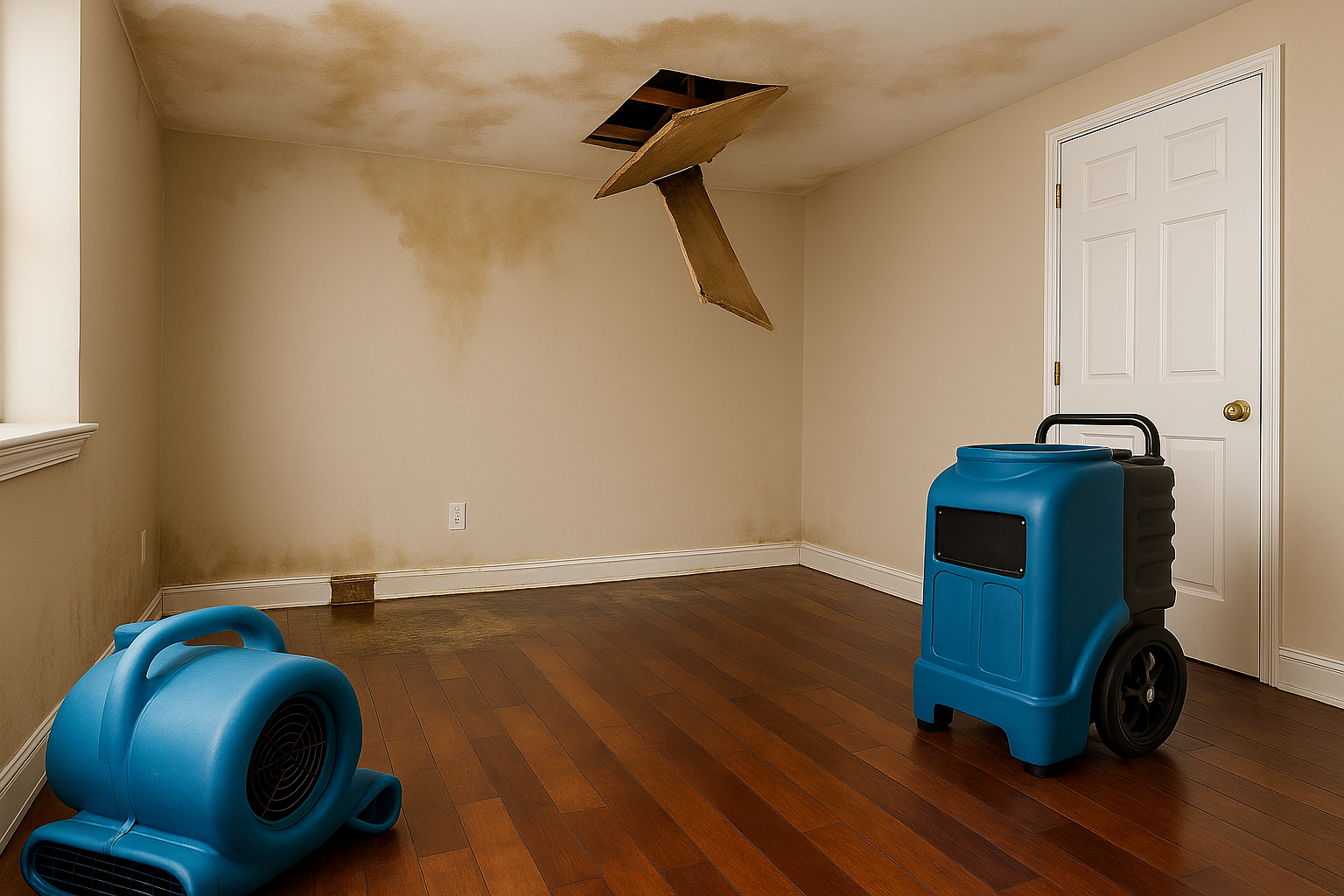Water Damage Repair in Peabody
Water moves fast. It slips behind walls, soaks into floors, and stains ceilings before you even realize there’s a problem. Pipes burst, drains back up, and storms push runoff inside. When that happens, you need a team that can get the water out, dry every surface, and repair the damage before mold takes hold. In Peabody, quick action is especially important due to the region's unpredictable weather.

Why We See Water Intrusion in Peabody Homes
Many homes in Peabody still rely on old construction methods, and those don’t stand up to today’s weather. Heavy rain can overwhelm drainage, sending water straight into basements. Cold snaps freeze pipes, causing cracks that leak behind walls. Roofs age, shingles loosen, and water finds its way inside. Even newer homes aren’t immune. Clogged gutters or poor grading can send water right to the foundation. Water always finds the easiest route, and that route often leads indoors.
Appliance failures catch people off guard. Water heaters rust out, washing machine hoses split, and dishwashers leak quietly under cabinets. By the time you spot the problem, the subfloor is soft and drywall is bubbling. These issues show up all year, and the longer water sits, the more it destroys.
How We Remove Water to Limit Lasting Damage
When water pools, it doesn’t just stay on the surface. It seeps into carpet, swells hardwood, and climbs up drywall. The first priority is to get that water out—fast. We use heavy-duty extractors to pull water from every layer, not just what you see. Acting quickly keeps the damage from spreading deeper.
- Carpet and Padding Extraction: We draw water out of carpet fibers and the padding below before it can reach the subfloor.
- Hardwood and Tile Floors: Water slips between boards and under grout, so we target every gap to prevent hidden damage.
- Basement Flooding: We pump out standing water and extract moisture from concrete and foundation walls to protect the structure.
- Crawl Space Water Removal: Water collects in low spots, threatening supports and insulation, so we clear it out completely.
- Ceiling and Wall Cavities: Water travels through insulation and drywall, so we extract from inside walls and ceilings, not just the surface.
We don’t just mop up and move on. Every gallon we remove now means less repair work later. Our focus is on what’s hidden as much as what’s visible.
Drying Every Material Before We Rebuild
After extraction, materials still hold moisture. Drywall stays damp, wood swells, and concrete can take weeks to dry out. That’s why we bring in air movers and dehumidifiers, measuring moisture levels as we go. We don’t rely on guessing—every surface gets checked before repairs begin.
- Air Movers: We use high-speed fans to move air across wet surfaces, speeding up evaporation.
- Dehumidifiers: Industrial units pull moisture from the air, helping materials dry out faster and more thoroughly.
- Moisture Meters: We test walls, floors, and ceilings to confirm they’re dry before moving forward.
- Controlled Airflow: Our setup keeps air moving without spreading dust or mold spores to other areas.
Rushing this step leads to bigger headaches. Sealing up damp materials traps moisture, and that’s when mold takes over. We monitor every day, adjusting equipment until the readings are right. Only then do we start repairs.
How We Handle Mold After Water Damage
When water lingers, mold doesn’t wait. It only needs a little moisture and something to feed on—drywall, wood, insulation, or carpet. Once it starts, it spreads quickly, showing up on walls and in the air. Health issues follow if it’s ignored.
We treat every job as a potential mold risk. That means drying fast, removing anything that can’t be saved, and treating exposed surfaces. If mold is already present, we contain the area, remove contaminated materials, and clean everything left behind. Peabody homes see mold after basement floods, roof leaks, and plumbing failures. Our approach stops it before it spreads further.
Restoring Floors, Walls, and Structure the Right Way
With everything dry, repairs begin. Damaged drywall comes out and gets replaced. Warped baseboards and trim are swapped for new, painted to match. Flooring that’s buckled or soft gets pulled up and redone. We don’t cover up problems—we fix them so they stay fixed.
- Drywall Replacement: We cut out damaged sections, install new panels, and finish to match the original look.
- Baseboard and Trim: Warped or stained trim is replaced and painted for a seamless finish.
- Subfloor Repair: Soft or rotted subflooring is removed and replaced before new flooring goes down.
- Hardwood Floor Restoration: Boards are sanded, refinished, or replaced depending on the extent of swelling or cupping.
- Tile and Grout Work: Cracked tiles and loose grout are reset and sealed to prevent future leaks.
Some jobs go deeper. If floor joists are weakened, we reinforce or replace them. Soaked insulation comes out and gets replaced. Leal Cleaning & Restoration Inc. handles every step, so you’re not left coordinating with multiple contractors. We see the job through from start to finish.
What to Expect When We Restore Your Property
Our process starts with a thorough walkthrough. We check every room, measure moisture, and map out where water traveled. You’ll know exactly what needs drying, what needs removal, and what can be saved. No guessing, no hidden costs. Just a clear plan and honest pricing.
We extract water, set up drying equipment, and monitor progress daily. Once everything is dry, we remove unsalvageable materials and begin repairs. Drywall, flooring, trim, and structural work all happen in one coordinated visit. When we’re finished, your home is clean, dry, and fully restored. No lingering debris, no unfinished repairs. Just a space that’s safe and ready for you.
Let's Get Your Property Dried Out and Fixed
Water damage doesn't fix itself. The longer it sits, the worse it gets. Call Leal Cleaning & Restoration Inc. at 978-778-6677 or schedule an appointment to get started.



